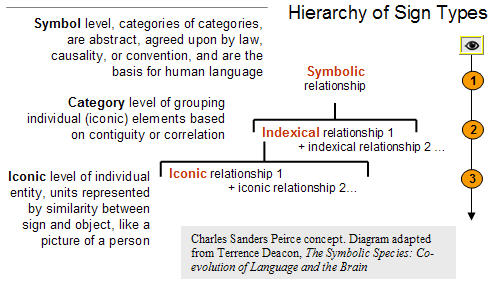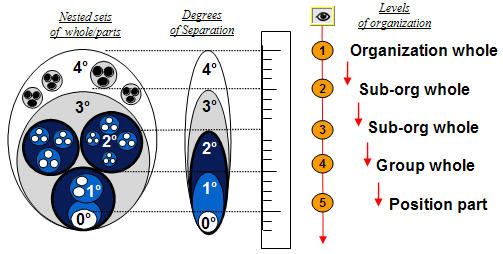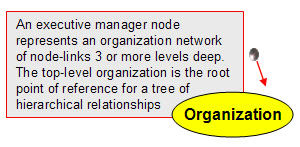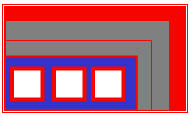| When singular positions are hooked together by the pattern of one exclusive link (e.g., a direct reporting relationship), they form a formal “containment hierarchy.” This is the org chart, but it is also the complete classification system for this unique organization, the rollup categories for its financial system, as well as it’s “end-of-the-day” accountability structure of interlocked managers.
|
|
Organizations as a node type represents the whole. They are groups of 3-levels or more. Practically, they are represented by executive managers, positions that are simultaneously line managers and employees, depending on context.
- Teams are groups, 2-level structures of direct 1-degree position-to-position, person-to-person, relationships.
- The executive structure of 3+ levels is a network of teams, associated in a nested set of sub-organizations bounded by the top-level organization.
As a form of representation, the executive levels are the symbolic level of signs, categories of categories, the level of human language. |
|
 The top Level 1 organization represents the whole hierarchical classification system of positions, groups, and sub-organizations, all inherent in the single direct reporting-link relationship. This internal taxonomy constitutes the symbolic construction of the whole organization, each position playing its part
|
“The Hierarchy” is the nested set of mutually-exclusive containers used by Finance as the budget rollup boxes as well as, in some cases, revenue rollup. Performance measures are calculated for organization categories (and their managers are held accountable).
|
|
Positions, jobs, serve as the lowest unit category for successively more inclusive organizational rollup containers. Positions are placed in some team budget box inside a larger organization box as part of the financial hierarchy structure.
|
|
Teams serve is the first level organizational group category, a budget box that includes the assigned headcount. All heads are part of a logical management team box.
|
|
Management teams are grouped into higher-level organizational containers that culminates in the “whole organization container,” the legal entity itself
|

- A root whole is the required starting point node for nested whole/part relationships that unfold within the largest container (e.g., Eleum, Inc.) represented by a position (CEO)
- An organization and its sub-orgs is a set of nodes connected to a root node. A root perspective is a point of reference that can be established at any node in a network, including an organization root of one.
- A group, team, is the first level of association for unit parts
- A position part is the smallest uniquely identifiable element node required to represent networks of people, teams, organizations, and place.
|





